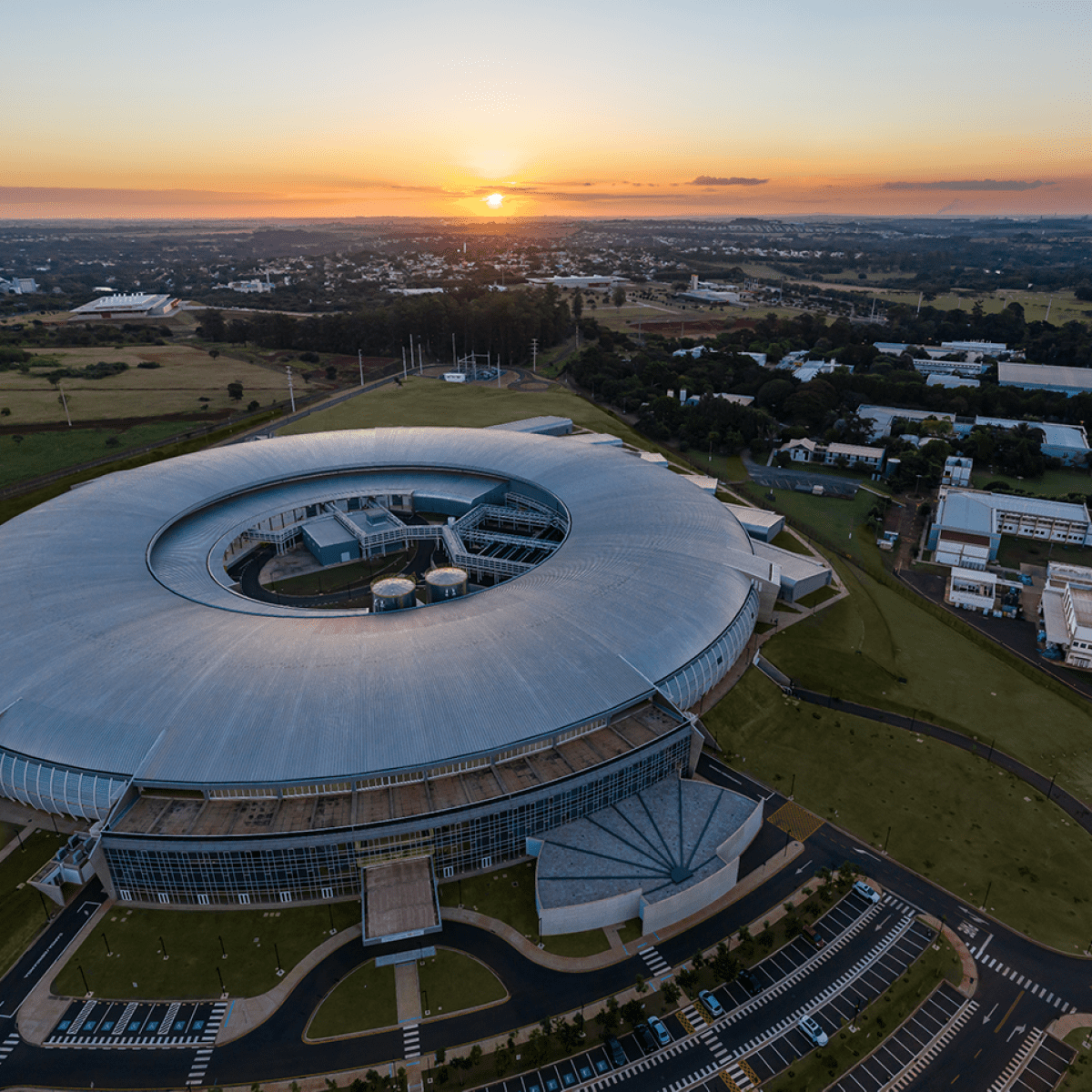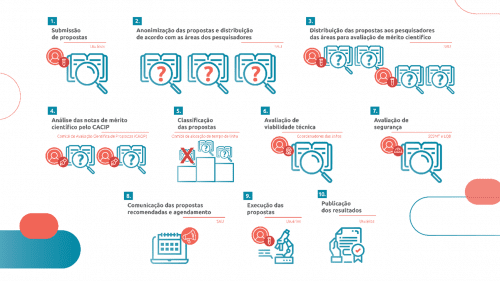
25% of the scientists who submitted proposals have never used the CNPEM’s labs
The first call for proposals for experiments to be conducted at Sirius, the Brazilian synchrotron light source, yielded 334 submissions from researchers in 15 countries and 17 Brazilian states. Sirius was planned and is operated by the Brazilian Center for Research in Energy and Materials (CNPEM), under the supervision of the Ministry of Science, Technology and Innovation (MCTI), and is the largest and most complex research infrastructure in the country.
During November and December 2022, researchers in Brazil and around the world interested in conducting experiments at Sirius were invited to submit proposals to use the six research stations, which are known as beamlines. Of the 334 proposals that were received, 298 came from Brazilian institutions and 36 from abroad, mainly from Argentina, Great Britain, Germany, Saudi Arabia, the United States, and Switzerland.
Among Brazilian submissions, the Southeast region led the pack (74.8%), followed by the Northeast (12.7%), the South (9.7%), and the North and Center-West with 1.3% each. Proposals came from researchers in 17 Brazilian states, with the most coming from São Paulo, Rio de Janeiro, Minas Gerais, Rio Grande do Sul, and Pernambuco.
Roughly a quarter of the proposals were received from new users, namely researchers who have never used the open facilities in any of the four national laboratories that are part of the CNPEM. The most frequent knowledge area appearing in the proposals was materials science and nanotechnology, followed by physics, chemistry, earth and the environment, and agricultural sciences, in that order.
The proposals for research to be conducted at Sirius will be selected through a double-blind peer review process that considers scientific merit. Allocation of beamline time in the research stations will also take into account the geographical distribution and diversity of scientific areas.
Not only is academic use free, but researchers from Brazilian and foreign institutions who live in Latin America and the Caribbean whose projects are approved may also request financial aid to travel to Campinas and use the facilities at Sirius. The experiments selected in this call for proposals will be scheduled to begin in March of this year. A new call for proposals will be held in the second quarter of 2023.
More information is available on the LNLS site: https://lnls.cnpem.br/noticias/sirius-abre-nova-chamada-para-receber-propostas-de-pesquisa/. Through this link, you can also get in touch with the LNLS technical team if you have any questions about the science or operations.
The first regular call for research proposals at Sirius includes six beamlines (as the experimental stations are called). These lines operate independently and simultaneously, and have already completed the scientific commissioning phase, when researchers test the parameters of the machinery and the available techniques in real experiments. The beamlines and experimental resources available in this call for proposals are:
Carnaúba: Micro and nano-florescence and X-ray spectroscopy and ptychography. This station analyzes a wide variety of nano-structured materials to obtain 2D and 3D imaging of soil composition and structure and biological materials and fertilizers with nanometric resolution, as well as other research in the environmental sciences.
Cateretê: Coherent diffraction imaging (ptychography) and X-ray photon correlation spectroscopy (XPCS). This station is optimized for 3D imaging with nanometric resolution of materials for a broad array of applications.
Ipê: X-ray absorption spectroscopy (XAS) and photoelectron spectroscopy (XPS). This line is optimized to study the distribution of electrons in the atoms and molecules present in liquid, solid, and gaseous interfaces. It permits exploration of how chemical bonds occur at the interfaces of materials like catalysts, electrochemical cells, and materials subject to corrosion, as well as how electrical currents propagate in different materials from insulation to superconductors.
Ema: High-pressure X-ray spectroscopy and diffraction. The techniques offered in this beamline allow researchers to investigate materials subjected to extreme temperatures, pressures, or magnetic fields. Research on matter under such conditions may reveal new properties and characteristics that do not exist under normal ambient conditions. This is the case for superconductive materials, for example, which can conduct electrical currents without resistance and have the potential to revolutionize energy transmission and storage.
Imbuia: Micro and nano infrared spectroscopy (FTIR). This experimental station is dedicated to research using infrared light, making it possible to identify functional groups of molecules and analyze the composition of practically any material with nanometric resolution.
Manacá: Macromolecular crystallography (MX). This line features equipment that reveals 3D structures of proteins and enzymes with atomic resolution, showing the position of each atom that comprises a certain protein and its functions and interactions with other molecules, such as those used as active components in new medications.
Research proposals for the Manacá beamline are “fast tracked”: submissions for research on this beamline are evaluated and accepted on an ongoing basis without interruption, as established previously during the scientific commissioning phase.
So that every proposal can be evaluated from multiple specialist points of view, a new distributed assessment system is being adopted: all researchers proposing projects during a certain call for proposals are also potential reviewers for that same process within their specialty areas. At least five reviewers assess each proposal.
“The evaluators do not have access to the names or institutions of the proposing researchers. Gender pronouns also do not appear in the proposals. To keep the process anonymous, researchers writing proposals are instructed to remove any language that might identify research previously published by the group to avoid any reviewer bias,” notes LNLS Director Harry Westfahl Jr.
This assessment system is also used for research done by the CNPEM’s own scientific groups.

Besides the 6 beamlines that are open for regular operations, starting next year 5 new lines will receive users as part of the scientific commissioning phase, in which users can conduct experiments that help assess the parameters of the beamline:
Additionally, the SAPÊ line (angle-resolved photoemission spectroscopy) will accept regular proposals for research using the spectrometer in “offline mode,” without connection to the synchrotron light source.
The new deadline for research proposal submission is 19 November at 12:00 AM.
This call will adopt a new, more inclusive, collaborative review process. The submitted proposals will be evaluated on their scientific merit under a double-blind and crossed-peer review system